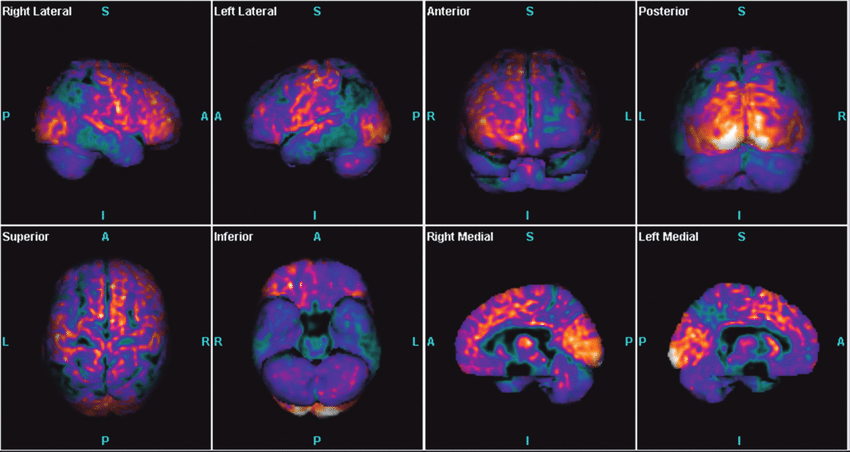An estimated 5.7 million people in the U.S. have Alzheimer’s disease—the most common type of dementia—and that number is expected to more than double by 2050. Early diagnosis is crucial for patients to benefit from the few therapies available. To diagnose this disease, doctors must conduct numerous clinical and neuropsychological tests. However, there is growing interest in developing artificial intelligence (AI) methods of identifying Alzheimer’s. Some of these tests some use brain imaging, some look for biomarkers in the blood, some use eye exams, and some analyze word usage on smartphones.
At the University of Cambridge, machine learning tools that can detect dementia in patients at a very early stage have been developed. Using brain scans from patients who later developed Alzheimer’s, their machine learning algorithm learned to spot structural changes in the brain, such as patterns of grey matter loss. When combined with results from standard memory tests, the algorithm was able to predict whether an individual will show slower or faster decline in their cognition. For patients who already had mild cognitive impairment (MCI) – signs of memory loss or problems with language or visual/spatial perception – the algorithm was more than 80% accurate in predicting which of them went on to develop Alzheimer’s disease. It was also able to identify some patients who were not yet showing any symptoms but went on to develop Alzheimer’s. This new approach works in a research setting, but now needs to be tested in a real-world setting. The goals would be to identify patients as early as five to 10 years before they show symptoms.
Researchers at the University of California, San Francisco, have successfully trained an AI algorithm to recognize one of the early signs of Alzheimer’s—a reduction in the brain’s glucose consumption—in positron emission tomography (PET) imaging. According to a study, the algorithm accurately predicted an eventual Alzheimer’s diagnosis in nearly all the test cases.
PET is useful in diagnosing Alzheimer’s because the disease causes subtle changes in the brain’s metabolism that begins years before neural tissue starts to degrade. This type of imaging produces three-dimensional views of metabolism, circulation, and other cellular activity in the brain. The algorithm used in this study was highly sensitive and was able to recognize 81-90 percent of the patients who would be diagnosed with Alzheimer’s six years later, on average. The algorithm is based on “deep learning,” a machine-learning technique that uses artificial neural networks programmed to learn from examples.
The National Health Service of the UK has a novel approach which uses an app designed to detect signs of cognitive impairment using pictures of animals. Created by a company called Cognetivity, this app relies on the brain’s ability to process information visually. In just five minutes, 100 images of natural landscapes flash onto the screen, 50 with animals and 50 without. The person being tested taps the screen to classify the image as an animal or non-animal image. In healthy brains, this takes less than 200 milliseconds; people with Alzheimer’s and mild cognitive impairment (MCI) generally have lower speed and accuracy.
Studies have demonstrated that this test, called the ICA, successfully detected MCI and Alzheimer’s dementia across two separate populations, reliably differentiating between healthy cognition, MCI, and Alzheimer’s with 80% accuracy. This is similar to the level of accuracy used in the Montreal Cognitive Assessment and Addenbrooke’s Cognitive Examination. However, the ICA test is faster, more sensitive, less biased, and easier to administer than the other tests.
The UK’s NHS hopes to be able to use the ICA to test people at regular intervals to track the progression of cognitive decline, and if people begin to show signs of worsening cognitive function, doctors will refer them to a specialist. The goal is to diagnose Alzheimer’s earlier, leaving more time for treatment.
Another application of AI uses writing samples to predict the onset of Alzheimer’s with 70 percent accuracy. A team from IBM and Pfizer says it has trained AI models to spot early signs of the disease by looking at linguistic patterns in word usage. These new AI models provide a way to detect subtle changes earlier in time before a clinical diagnosis is made. This might alert people to changes that indicate the need to have a more complete exam. Language samples, whether written or spoken, offer a relatively noninvasive source of information for monitoring peoples’ cognitive health, compared with brain scans and other laboratory tests. Collecting such language data could be done cheaply and remotely but doing so would require strict informed consent and privacy safeguards because some people might not even want to know how likely they are to develop it
